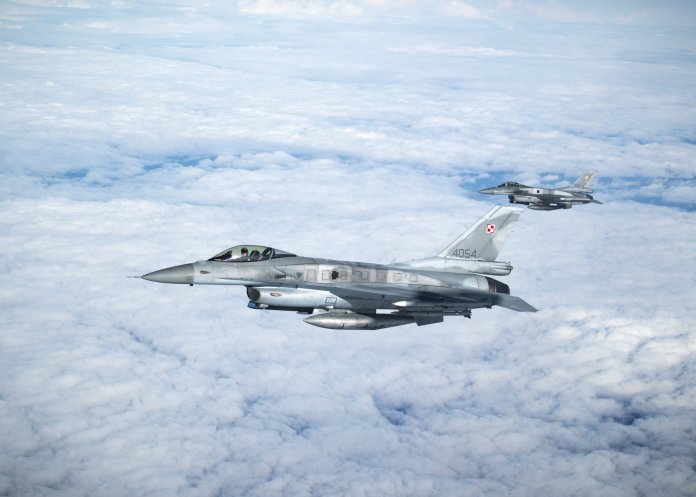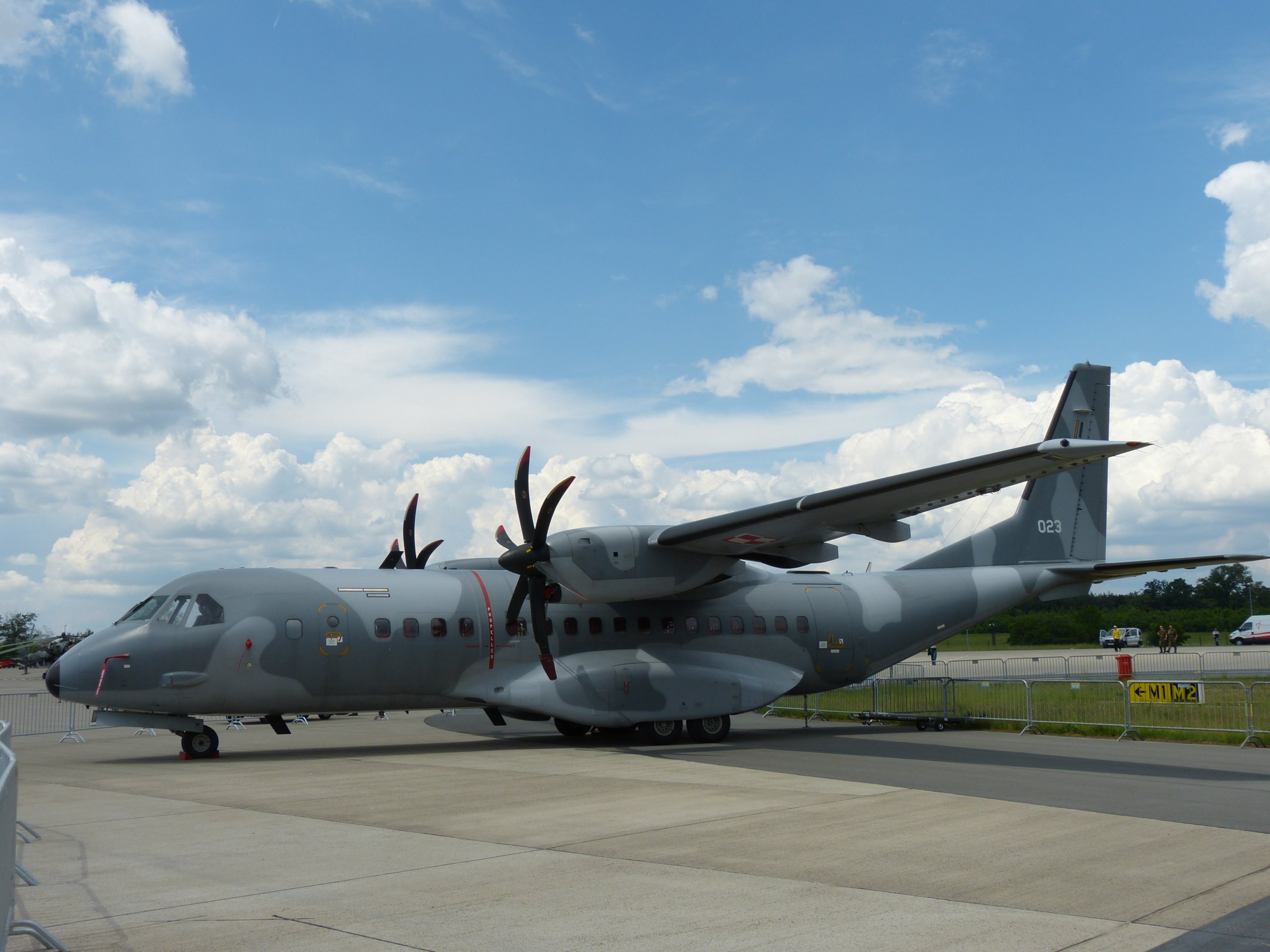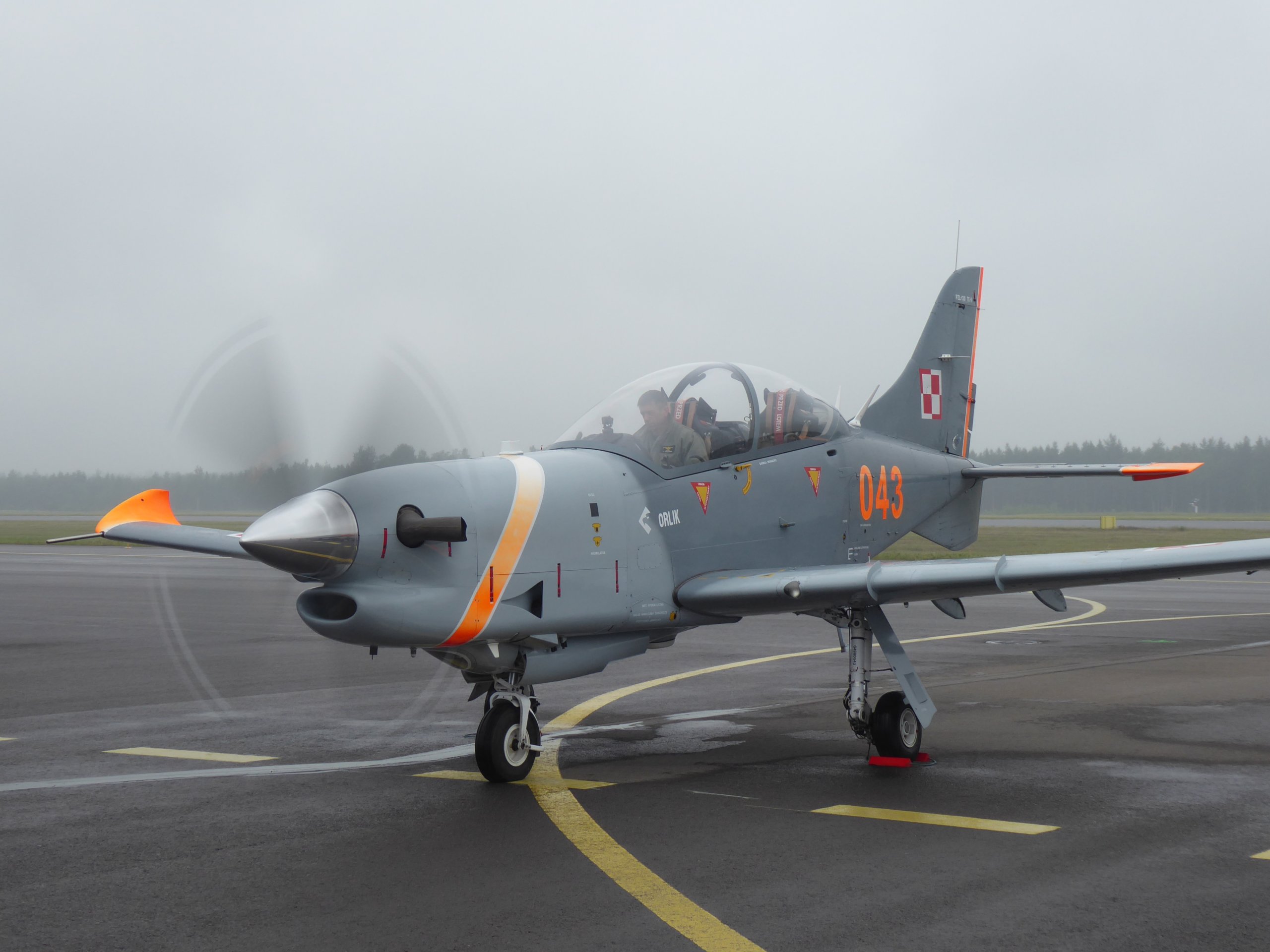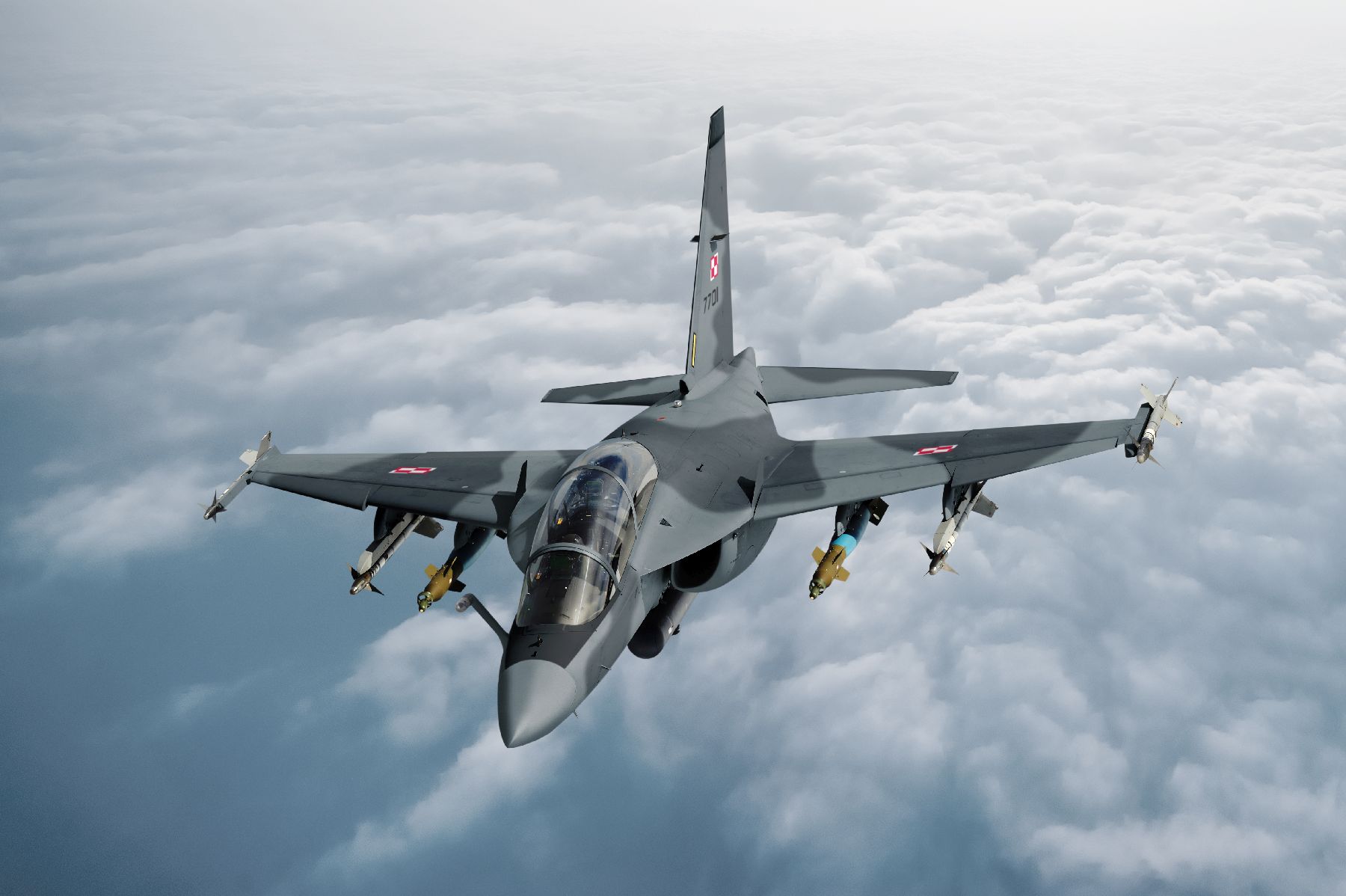
Poland’s Air Force acquisition programmes that strive to replace Soviet-era airframes with NATO compatible ones have suffered from frequent delays due to funding and indecision about what is actually required.
When the former Warsaw Pact country joined NATO in 1999, Poland’s armed forces were mainly equipped with obsolete Soviet-era equipment. This particularly applied to the Polish Air Force but in the next decade efforts were made to equip it with state-of-the-art Western military aircraft. This began with the introduction into service of the Lockheed Martin F-16 fighter in 2006 to replace its fleet of MiG-21s. The culmination of this strategy was the signing of a $4.6 billion contract to purchase 32 Lockheed Martin Block 4 F-35A Lightning II multi-role combat aircraft in 2019.
The Polish Air Force has replaced its Antonov An-26s with 16 Airbus C-295M medium-range transport aircraft which are currently being upgraded with improved engines and modern avionics and communication systems to C295W standard. Its tactical transport fleet is comprised of five ex-USAF Lockheed Martin C-130E Hercules which will be joined by five C-130H aircraft from the same source from 2022.

Polish Air Force pilot training is carried out on 28 indigenous PZL-130 Orlik TC-I turboprop primary trainers that are being upgraded by Airbus subsidiary PZL Warszawa-Okęcie with new engines and improved avionics. Lead-in fighter training will be carried out on the Leonardo M-346 Master, 16 of which are replacing the indigenous TS-11 Iskra. Helicopter training is carried out on the PZL-Świdnik SW-4 light helicopter which entered service in 2010.
However, Poland has a substantial number of requirements outstanding, not only to replace remaining legacy Soviet-era aircraft and helicopters, but for new strategic transport aircraft and aerial tankers, naval helicopters and maritime unmanned aerial systems (MUAS). The Polish Ministry of National Defence (MND) recently launched several programmes for the acquisition of new aircraft although most of them, due to budget restrictions and the COVID-19 pandemic, have been put on the back burner.

The HARPIA programme was launched in 2018 to replace the Soviet-era MiG-29 and Su-22 fighter aircraft within the next decade. The Polish Air Force had lost an average of one MiG-29 per year and on 14 May 2021 a MiG-29 from Malbork AFB accidentally fired on another aircraft during a training exercise over the Nadarzyce training ground. The pilot was not injured, but the MiG-29 was damaged and needed to be repaired. The military aviation repair company WZL 4 has a contract to repair and overhaul 35 of the MiG-29’s Klimov R-33K turbofan engines by 2023.
In 2014 the MND decided to upgrade 12 single-seat Su-22M4s and six two Su-22M3Ks after their airframe assessments with the installation of new radios and avionics. Their current role includes operating with Special Forces Joint Terminal Attack Controllers (JTAC) and Air Defence unit training as well as taking part in NATO exercises.
Although no Request for Information (RfI) has been issued for the Harpia programme, Lockheed Martin and Saab are expected to bid and Leonardo is pitching its M-346FA as a potential replacement for Poland’s Su-22 fleet. The company claims that its light attack aircraft “provides enormous operational benefits, and has many similarities to the training version M-346 used by the Polish air force”.

After its maiden flight in full configuration in July 2020, the M-346FA is moving toward its delivery to the first international customer this year. Adopting an extensive variety of air-to-air and air-ground weapons, a gun pod, reconnaissance, target designation or electronic warfare pods coupled with a Helmet Mounted Display (HMD) system for both pilots, the M-346FA is equipped with Leonardo’s multi-mode Grifo M346 radar. Not only is it a cost-effective multi-role combat aircraft, while fully keeping its training characteristics, according to Leonardo the M-346FA would be a capable Red Air/Aggressor asset.
In 2016 Poland withdrew from the NATO multinational Multi-Role Tanker Transport (MRTT) fleet programme and a year later the MND launched it own MRTT programme codenamed Karkonosze. This was replaced by the DROP programme for strategic transport aircraft to replace the Polish Air Force’s C-130Es to which five manufacturers responded, Airbus, Boeing, Embraer, Leonardo and Lockheed Martin. In July 2020 the MND announced that due to the redefinition of operational requirements, the analytical and conceptional phase of the DROP programme had been stopped. Although five former USAF C-130H Hercules have been ordered for delivery over the next three years, with F-35As set to enter service in the near future, the Polish Air Force will not have a dedicated tanker aircraft in its inventory.

Army Aviation Lose Out
Currently, the big loser on the procurement ladder is Poland’s Army Aviation. The MND is still expected to launch its long-delayed tender for the procurement of 32 modern attack helicopters for the Army Aviation under the Kruk programme which calls for the replacement of a fleet of obsolete, Soviet-era Mi-24D/W combat helicopters which no longer meet the requirements of the modern battlefield.
Potential competitors for the programme were expected to include Turkish Aerospace with the T129 ATAK, Leonardo with the AW249, Airbus Helicopters with the Tiger and Boeing with the AH-64 Apache. After being awarded a contract to supply eight S-70i Black Hawk helicopters manufactured by PZL Mielec to the Polish Special Forces in 2018, Sikorsky stated that there is the potential for further sales of the Black Hawk to the Polish Armed Forces.
The analytical phase of the Kruk programme was launched in 2014 since when the Armament Inspectorate has failed to start the formal tender procedure, and in the meantime, there are repeatedly changing priorities and technical requirements for the project.
The Polish Army Aviation’s Mi-24D/Mi-24V fleet currently numbers 28 aircraft comprising 13 Mi-24V/Ws and 14 Mi-24Ds operated by two squadrons assigned to the 56th Air Base at Inowroclaw-Latkowo and a third at the 49th Air Base at Pruszec Gdanski. The Polish defence industry proposed a comprehensive upgrade to including a new integrated avionics system with head-up and multi-function displays, the Rafael Toplite electro-optical/infrared sensor turret and new defensive aide suite (DAS) equipment. In October 2020 Poland confirmed that only the Mi-24 weapons system would include NATO standard munitions, including Rafael Spike air- to-surface missiles, the Piorun air-to-air missile, new rocket launchers and 12.7mm machine guns.
The tender was expected to finally be launched in 2020, however, the COVID-19 pandemic forced the MND to once again postpone the Kruk programme competition. After an assessment is made on the fatigue life of the Mi-24 airframes, the MND will decide if the fleet will be cycled through an affordable upgrade of their avionics and weapons system which could be launched in 2022 but with first deliveries expected no earlier than 2024. This has left the Army Aviation with the no answer to the question about when it might receive new combat helicopters which are needed to significantly enhance its operational and combat capabilities and also allow for the development of new tactics for enhanced cooperation with various types of units on the modern battlefield.
The Army Aviation’s ageing Mi-2, Mi-8/17s and PZL W-3M Sokol medium helicopters, a total fleet of more than 100 aircraft, are to be replaced under the Perkoz programme. The H225M had been selected in April 2015 to replace the Polish Army’s large fleet of Mil Mi-8s in preference to the Leonardo AW149 or the Sikorsky S-70i Black Hawk. The contract awarded to Airbus was for 50 Caracal helicopters worth $3.5 billion but in October 2016 the Polish government abandoned plans to buy the 50 Caracal helicopters claiming that the proposed contract was not in the country’s economic and security interests.
The Perkoz programme has been reinstated and bidders could include PZL-Świdnik/Leonardo with the AW169M or AW149, PZL Mielec/Lockheed Martin with the S-70i Black Hawk and Airbus with the H145M. Bell announced that it intended to offer Poland its H-1 family aircraft, the AH-1Z Viper attack helicopter and UH-1Y Venom multi-role medium helicopter, for a number of the country’s procurement programmes, including Perkoz and Kruk. The manufacturer stated that this duo had recently been selected by the Czech Armed Forces, which procured four Viper and eight Venom helicopters.
The Polish Armaments Inspectorate planned to select a number of offers to receive a RfI, and be subsequently invited to participate in the Technical Dialogue Procedure (TDP), which should have been finalised by December 2021. However, in March 2021 the TDP for the in Perkoz programme was indefinitely suspended. As a consequence, a need will emerge for the Army Aviation’s existing fleets of W-3, Mi-8, or Mi-2 rotary-wing platforms to extend their service life.
The Kondor programme was launched in December 2019 by the Polish Armaments Inspectorate to replace the Polish Navy’s four Kaman SH-2G Super Seasprite shipboard anti-submarine warfare (ASW) helicopters. The programme’s goal is to acquire four to eight multi-role helicopters with a maximum take-off weight of no more than 14,300lb (6,500kg), capable of performing anti-submarine warfare (ASW) operations and target acquisition with the use of onboard ship radar systems. The new maritime helicopters will be subordinate to the Naval Aviation Brigade of the Polish Navy. Nine manufacturers have signalled their intention to participate in the TDP including four local Polish companies and five foreign manufacturers. Bell is offering its 412 model while Leonardo’s PZL-Świdnik is pitching the AW159 Wildcat.
Leonardo with PZL-Świdnik already has successfully competed for a Polish Navy contract for the replacement of six Soviet-era Mil Mi-14L/PS. In April 2019, the company announced it would supply four AW101s and a comprehensive integrated logistics and training package worth $430 million to the Polish MND. PZL-Świdnik is acting as prime contractor while the team assembling the aircraft is at Leonardo in Yeovil, UK. The first production AW101 aircraft for the Polish Navy achieved its first flight at the company’s site in Yeovil on 20 July 2021. The flight demonstrated functional checks of the main airframe systems as well as the control system, and engine-handling checks were taken throughout to monitor the speed range of the aircraft. The flight envelope will now be opened further with testing exploring the bespoke mission equipment fitted to the aircraft.
The AW101 will perform a range of missions for the Polish Navy including ASW and Combat Search and Rescue (CSAR), with aircraft deliveries scheduled by the end of 2022.

In December 2018 Airbus had announced its decision to withdraw from the Polish MND’s tender to acquire new helicopters to replace the Navy’s Mi-14s. The company said that again the offset requirements defined by the Polish MND made it impossible for Airbus to submit a competitive offer, but that it continued to be interested in supporting the process of the modernisation of the Polish Armed Forces in the field of helicopter fleet replacement.
In another sector of the Polish Armed Forces modernisation campaign, the MND announced in March 2018 that another much delayed programme codenamed Gryf for a medium-range tactical unmanned aerial vehicle (UAV) was to involve the delivery of six systems, each with four UAVs and a control station between 2020 and 2022. Another six systems could be procured in the unspecified future. Competitors were expected to include Elbit Systems’ Hermes 900 and General Atomics’ MQ-9 Reaper but in a surprise move, the Polish MND signed a contract with the Turkish company Baykar OEM in May 2021 to purchase four Bayraktar TB-2 combat systems, which include 24 UAVs, for approximately $270 million, with the first system to be delivered in 2022. Poland has become the first buyer of Turkish-made UAVs within NATO.
Under the Albatros programme to provide a tactical short-range maritime VTOL UAV for the Polish Navy, the Armament Inspectorate announced six bidders: UMS Skeldar, WB Electronics, PZL-Świdnik with Leonardo, Schiebel, WORKS 11 with Martin UAV, and Siltec. The bids had to be submitted by 29 January 2021 with the delivery of a system within 15 months.
Earlier this year it was reported that Poland has managed to avoid the same level of economic damage experienced in other European countries during the pandemic and this may fast track some of the Polish Armed Forces’ delayed aircraft programmes that must be resolved in the near future.
by David Oliver












